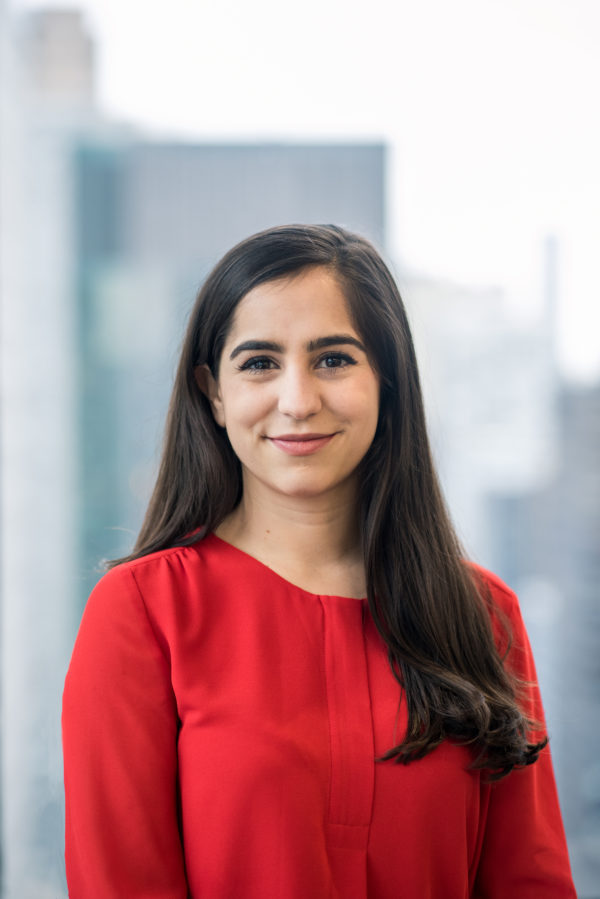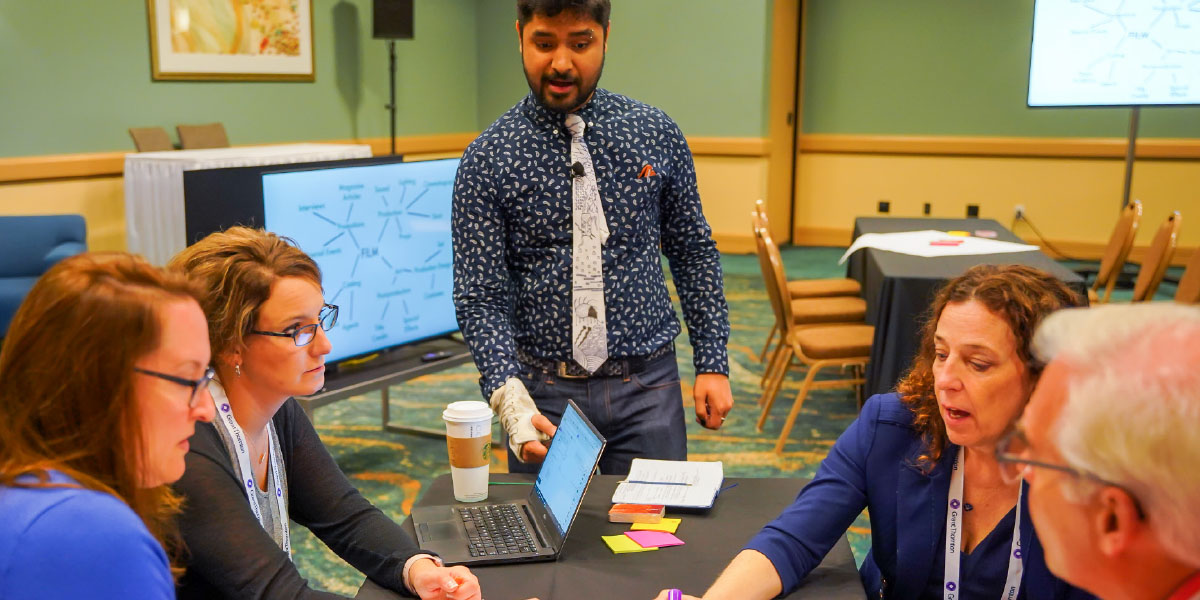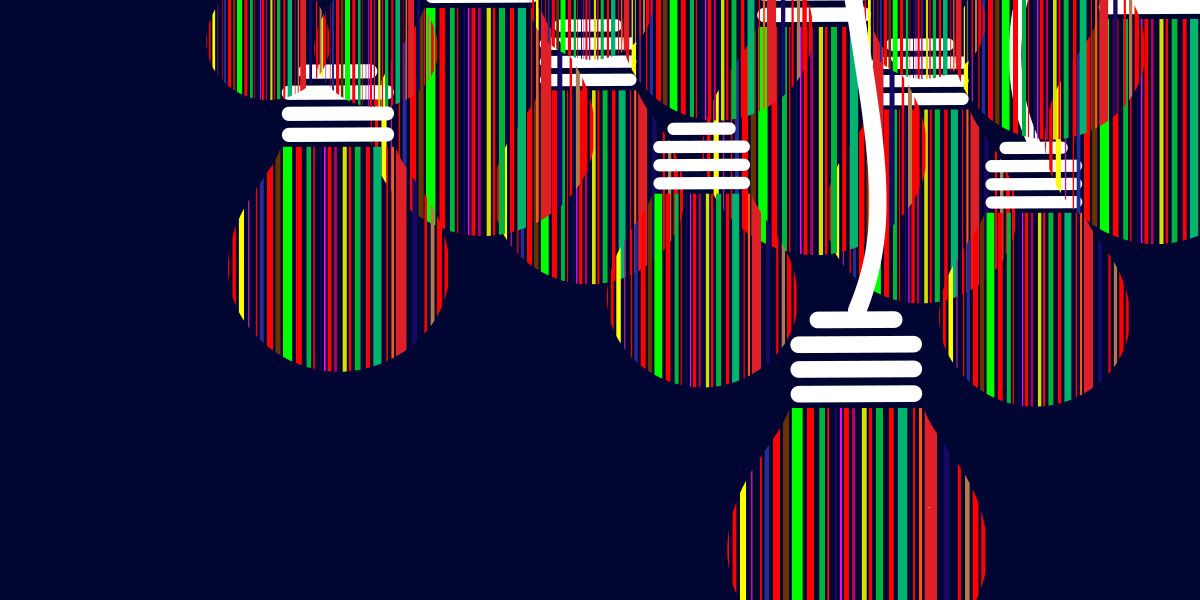Diversity—the varied experiences, skills, cultures, and interests of a group of people—can be a rich source of innovation and creativity for institutions, if that potential is properly harnessed, according to Sharang Biswas and Juliana Echeverri from The Medici Group (Medici), an organization that helps companies activate diversity into an innovative edge.
Biswas, who is a Medici experience designer, creates, customizes, and facilitates workshops and content for a wide range of events. He has designed interactive experiences of all kinds, from museum tours and school curricula, to board games and interactive theater. Juliana Echeverri’s role as Medici’s growth strategist involves supporting the firm’s strategic vision through client delivery and business development, with a specific focus on events.
The firm’s thought leadership and approach are based on principles from The Medici Effect (Harvard Business Review Press, 2004) and The Click Moment (Portfolio, 2012), best-selling books written by The Medici Group’s Co-Founder and CEO Frans Johansson. (NACUBO members heard Johansson speak at the NACUBO 2013 Annual Meeting in Indianapolis.)
In an interview with Business Officer, Biswas and Echeverri expand on the concepts of intersectional thinking as they apply to higher education.
How should we think about diversity and the inclusion of diverse perspectives today?
ECHEVERRI: Oftentimes, the topic of diversity is only discussed in the context of race and gender. At Medici, we advocate broadening the definition of diversity to ways of thinking that include who we are (gender, ethnicity, culture, age, or sexuality), what we do (education, industry, function, or department), and how we do it (thinking or interaction styles).
BISWAS: At Medici, our vision is a world where we use our differences to change it. We work with organizations to help them understand that diversity is not only the right thing to do, but is a competitive advantage. We hone in on the fact that leveraging diversity actually makes organizations work better and faster. We find that a lot of companies will point to their representation metrics, which means that they often miss the inclusion part of the equation. An organization’s diversity metrics may reflect compliance or even that they’re leading the pack, but by what standards? And if there isn’t a culture of inclusion, the “diversity” in the organization is not set up for success, and as a result, neither is the organization.
One big hesitation for many organizations that strive to innovate is the fear of failure. How can leaders at colleges and universities encourage their people to move from directional to intersectional thinking?
BISWAS: Intersectional thinking is when you’re combining seemingly disparate things to achieve interesting results. This isn’t an easy process, and not all these combinations will be successful. As a result, we teach our clients to experiment, and that failure is a necessary part of the process. In an uncertain world, failure is inevitable, and certainly not a reflection of one’s character.
When small experiments fail, they arm us with new knowledge and teach us how to proceed. It becomes important to test on a small scale and often, to place many bets, and to use those learnings to drive you closer to your goal. Of course, some experiments will succeed, and this allows organizations to invest in projects that have some level of proven success without expending large sums of funding early in the process.
The key is to keep these experiments small: Fear of failure lessens when the stakes aren’t as high, and spreading risk this way helps create a culture of embracing failure. When this is achieved, you’re a step closer to creating an environment where intersectional thinking can thrive.

Can you provide specific examples of intersectional thinking in the higher education space? What else besides the fear of failure can hold back a college or university from being more open to those innovative approaches?
ECHEVERRI: The entire concept of a liberal arts degree is intersectional: inviting students to take classes across disciplines and departments, with different teachers, and with students who are in different majors. That—at its core—is intersectional thinking. It’s encouraging to know that higher education in America recognizes the huge value of being exposed to several fields and areas of study.
By contrast, Sharang and I are both from abroad. I’m from Colombia; he’s Indian but grew up in the United Arab Emirates. If we had gone to school in those countries, 90 percent of the classes we would have taken would have been in the specific field of our major.
However, one of the obstacles we observe in the U.S. is that, although intersectional thinking is fostered among students and across curriculums, it’s not necessarily fostered among staff or faculty.
BISWAS: In fact, there are disincentives for professors to work with other departments; a professor gets grant funding for working in a specific area. You don’t want to publish in the Journal of Human Evolution unless you’re specifically an evolutionary biologist, for example, as it wouldn’t be recognized by peers in your field. We need to try to create spaces where professors and academics can not only work and research across disciplines, but also have a need to teach classes to undergraduate and graduate students in that way.
How can higher education benefit from other sectors to improve its service and delivery models?
ECHEVERRI: One of our clients is a Fortune 1000 company in the food industry. Its products are consumed, but in recent years, it has focused less on consumption and more on the experience. For them, the experience of buying and interacting with the product—how you hold and use it, and how it looks—can be more important than the quality of the product itself.
These insights should matter to higher education because it’s a space and an industry that’s remained the same for a really long time. The class registration process, number of credits required for a degree, and even the way classrooms are set up have not changed in recent years.
Marketing and research and development are catching up with the concept of improving their services and delivery models, as seen in the for-profit industry; higher education should also start thinking about this. How can institutions innovate on the actual experience? Think about how Amazon patented the one-click buy—it’s easy, it’s convenient, it makes you feel cool and efficient. Can we do the same thing for student housing and enrollment? I think that universities would benefit significantly from embracing the challenges and opportunities several for-profit companies have taken on in recent years.
What are some common traps that you see higher education leaders fall into while brainstorming or thinking about innovative processes?
ECHEVERRI: Most organizations and sectors, not just higher education, tend to homogenize their workforce and teams. For example, think of how strategic decisions are made. At universities, this might mean that such decisions happen at the vice president level or above. Assuming that some of these conversations are not confidential, then anyone below the VP level is excluded from these decisions. But what if we invited people from other levels and asked for their input? We argue that not only would the outcomes of such conversations be completely different, but they would actually be better. This is the power of diversity and inclusion. It puts us in a better position when trying to tackle challenges and opportunities because it enhances our innovative capabilities.
BISWAS: A common trap is an overreliance on logic and analysis. If you read The Click Moment, Frans Johansson’s second book, he talks a lot about using passion as an indicator for whether you should pursue a project or not. When trying a novel idea, you should ask yourself: Does this excite me? If it does, that alone is going to motivate you to work on it, especially when you face hardship, which is guaranteed as all innovation is disruptive and therefore faced with dissent and friction. Passion and emotion can also serve us in that we must accept that we live in an unpredictable world.
The skill sets that we have today might not serve us tomorrow, which means logic and reason will undoubtedly fail us. We suggest abandoning logical metrics and frameworks when it comes to innovative projects and pursuing those that surprise and excite us.
Although organizations would benefit from generating an abundance of ideas by leveraging diverse perspectives, it can be very difficult to navigate different points of view. How do organizations and leaders manage those related hurdles?
BISWAS: At first, it is difficult. If you put a diverse team together, it’s going to struggle for a little while; there’s going to be a lot of friction. After all, it’s easy to sit in a room where everyone thinks like you, because consensus comes naturally. Say I am a lawyer and I’m sitting next to a professor of biochemical engineering, and we’re trying to work on a project together. We don’t even have the same language. So, initially, it’s going to be hard, and there really isn’t a way around that.
Nonetheless, if we truly invest in leveraging each other’s differences rather than allowing them to divide us, the outcomes are significantly better. Once you understand each other, then you can start tapping into the different pools of knowledge and experience that each of you has and be inspired by them. After the initial bump, things will move faster, and more importantly, get better.
Recently, we’ve seen more companies focusing on diversity, equity, and inclusion initiatives—in particular, unconscious bias training. What are organizations still missing in order to successfully assemble those diverse teams and really harness those different perspectives?
ECHEVERRI: We need to create a clear line of sight between diversity and business outcomes. If you create an experience where people can see that diversity and inclusion make them better performers and more creative at problem solving, then we can guarantee that behavior will change.

Sometimes leaders are not wired to think that they need to bring different perspectives to the table. Are there specific activities and approaches that encourage individuals and teams to fully engage with each other?
BISWAS: The idea of inclusion shows up again here. If you request feedback from lots of different people and not just the person who you think knows best, you will give value to voices and perspectives that perhaps rarely are shared.
ECHEVERRI: One example that Frans Johansson often shares is that of DICE, the company that created an award-winning game called Mirror’s Edge. It used to be that engineers, designers, and animators sat in completely different places in their building. One of the project leaders, inspired after reading The Medici Effect, decided to shake things up. He moved people around so that a designer, an engineer, and an animator now sat next to each other.
The first couple of months under this new arrangement were awful. After months of friction, something interesting started to happen. An engineer would say, “I’m working on this, what do you think?” And the designer would say, “That doesn’t really work, but how about this?” These conversations would not have been possible had they continued to work in functional and physical silos. Again, while it was harder initially, these synergies ultimately enabled not only more creative problem solving, but faster rates of performance and execution.
Additionally, there are some interesting hiring trends happening in higher education that are worth mentioning. Many institutions now have adjunct professors or visiting professors who don’t necessarily hold doctorate degrees. The University of Virginia, my alma mater, recently hired its first professor of hip hop. It even hosted a guest lecture by a Grammy-winning producer; he doesn’t hold a doctorate degree, but he’s an incredible educator who’s been a Harvard University fellow. Student engagement with these faculty members has been incredibly high, despite their unconventional and nonlinear paths to education.
How should organizations think about long-term planning, and how should they operate in such a dynamic world where, in a lot of cases, an immediate response is required?
BISWAS: Frans Johansson talks a lot about the tension between the need for long-term planning and the fact that we live in an uncertain world. He suggests that navigating this landscape requires that companies restructure their efforts so that they are constantly making small, purposeful bets.
Rather than putting all their energy and resources into one project, we suggest that companies have multiple diverse teams working on different projects, and performing small steps with limited resources. This process allows you to quickly discern when things aren’t working out, without completely depreciating your resources. If one project fails, it can easily be shut down or pivot in a different direction. You must, however, also reward teams for trying, especially when they fail. We strongly believe that this is one of the best strategies for dealing with an uncertain world.
ECHEVERRI: What Sharang described is what we call SES, the smallest executable step. Another concept we encourage our clients to adopt is affordable loss. This principle was coined by professor Saras D. Sarasvathy at the University of Virginia’s Darden School of Business. She suggests that, instead of grounding your analyses on ROI, your execution process should be based on steps that you can afford. Rather than asking what will produce the most return, you should ask yourself, “If I do X, will I depreciate resources I am comfortable losing?” That way, you’re placing purposeful, smaller bets that allow you to test, experiment, and learn from these actions.
What anecdote or example can you share about your own personal or professional experience to help drive home the connection between diversity and innovation?
ECHEVERRI: Sharang and I recently finished conducting a cultural assessment for a client. Part of that assessment included running focus groups. A typical focus group includes a group of people sitting in a room answering a series of questions. From the beginning, we knew we wanted to innovate this type of format.
BISWAS: From what we knew of the company culture, we anticipated that participants would not be very forthcoming, given the sensitive issues we were trying to understand. We knew we had to solve this. We weren’t just asking them whether they preferred sweet or salty cereal, we were asking them about deep, sensitive matters. We realized that we had to do something new.
ECHEVERRI: My background is in research, particularly anthropology and public policy, and Sharang’s background is in game design and performance. We realized that we could combine these skill sets to create an innovative format that would help resolve the issues previously outlined. Our format ended up including role play and techniques drawn from theater, which ultimately allowed people to come out of their shells, and share and connect to the content in a much deeper way than if we had simply asked questions.
It worked because we were able to leverage my perspective on ethnography and anthropology, and Sharang’s perspective on game design and theater, to actually innovate the focus group structure—and produce better outcomes.
ANKUR PONDA is director, member engagement, NACUBO.



